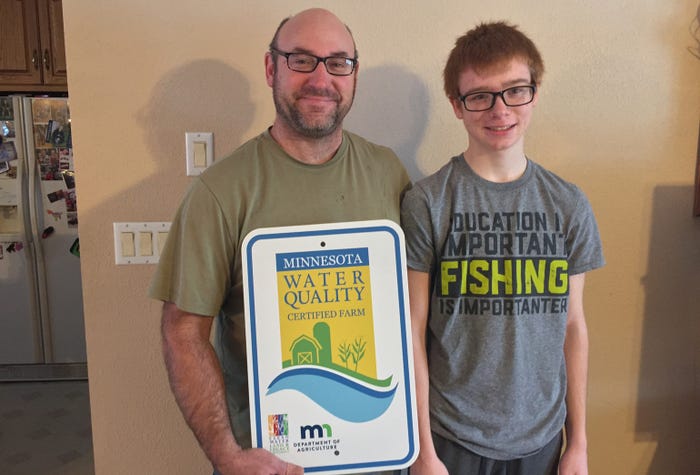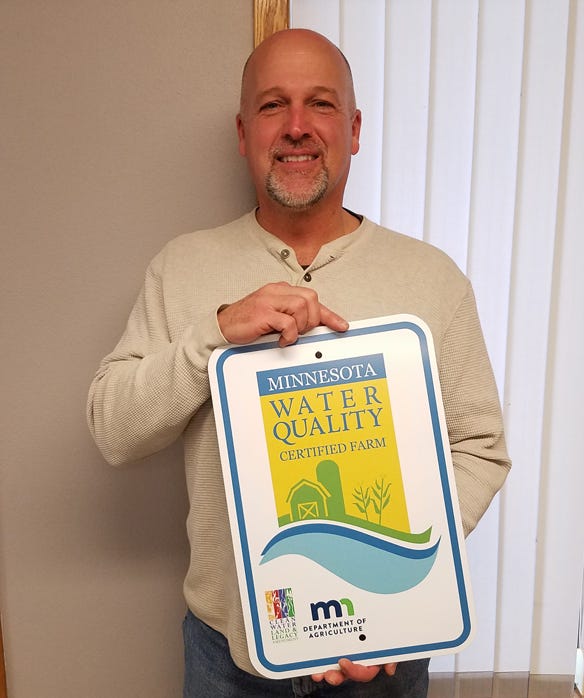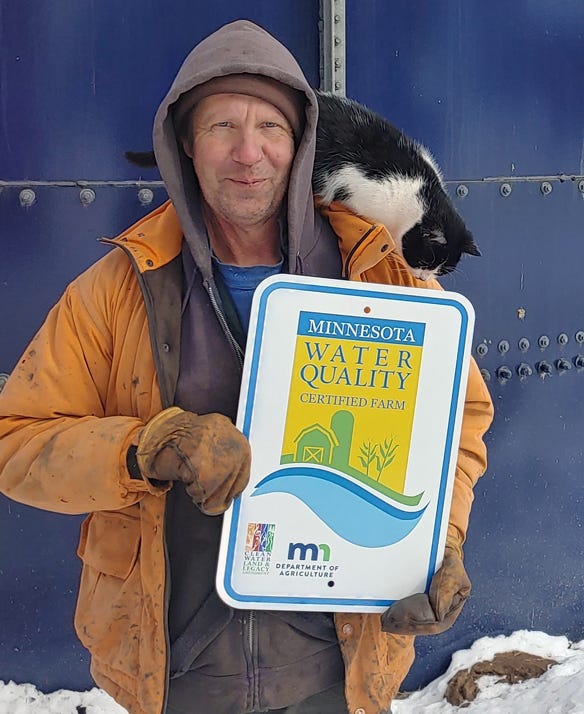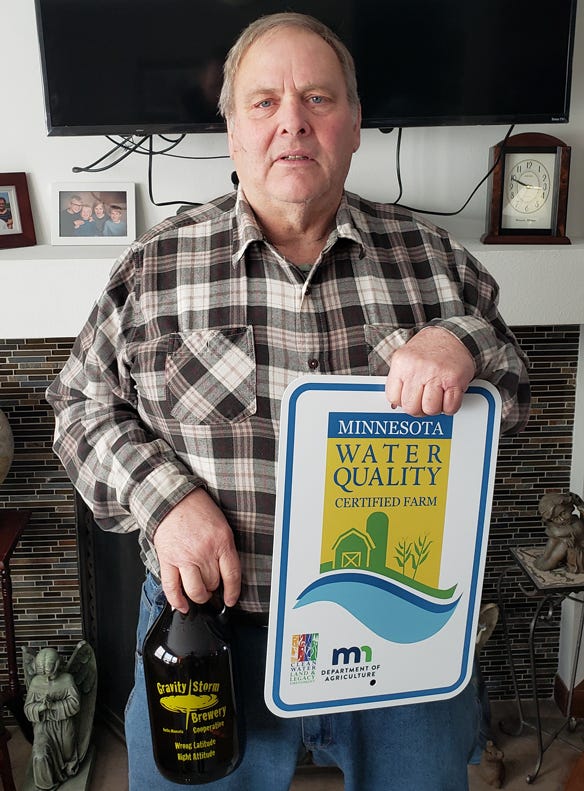February 24, 2021

One thousand farmers and landowners across the state are now enrolled in the Minnesota Agricultural Water Quality Certification Program. Some of these farmers shared their reasons to gain the certification in the photos accompanying this story, and they are also introduced below.
The 1,000-farmer enrollment milestone represents more than 715,000 acres of land certified by the program to be in compliance with practices that protect the state’s water resources.
“Water quality is important to all Minnesotans, especially those that care for the land, and we want to thank everyone that has stepped up to protect and restore our state’s lakes, rivers, streams and groundwater through the Minnesota Ag Water Quality Certification Program,” says Thom Petersen, Minnesota agriculture commissioner. “We can be assured these certified farmers are managing their operations to protect water quality now and into the future.”
The MAWQCP puts farmers in touch with local conservation district experts to identify and mitigate any risks their farm poses to water quality. Producers going through the certification process have priority access to financial assistance. After being certified, each farm is deemed in compliance with new water quality laws and regulations for 10 years.
Since the start of the program in 2014, the ag water quality certification program has:
added more than 2,050 new conservation practices
kept nearly 38,500 tons of sediment out of Minnesota rivers
saved 110,000 tons of soil and 48,500 pounds of phosphorus on farms
reduced nitrogen losses by up to 49%
reduced the equivalent of more than 39,000 metric tons of carbon emissions per year
There are also extra endorsements available to water-quality-certified producers for soil health, integrated pest management and wildlife. These endorsements celebrate farmers and landowners who are going above and beyond to implement conservation efforts on their land.
The program is on target to meet Gov. Tim Walz’s goal of enrolling 1 million acres by the end of 2022.
Farmers and landowners interested in becoming water-quality-certified can contact their local soil and water conservation district or visit mylandmylegacy.com.
Farmers recognized
MAWQCP is recognizing five farmers from across the state who pushed the program to the 1,000-enrollee milestone. They are:
The Possails, Lincoln and Lyon counties. Duane and Doug Possail and their nephew farm 2,430 combined acres of corn and soybeans, though each farm is its own entity. The Possails are beginning to implement no-till and cover crops on some acres through the Natural Resources Conservation Service Environmental Quality Incentives Program. Through certification, they agreed to reduce tillage on several fields, reduce phosphorus rates, use a nitrogen stabilizer with fall applications, implement critical area plantings and close open tile intakes.
Greg and Rebecca Symanietz, Stearns County. Greg and Rebecca Symanietz farm 135 acres of owned and rented cropland including corn, soybeans and alfalfa with an oats nurse crop. They also operate a beef herd of 40 cow-calf pairs. Greg recently made improvements to his grazing system by adding fencing, an armored cattle lane, and a watering system with a heavy-use area protection surrounding it. These practices will allow him to rotationally graze his cattle on more than 60 acres of pasture, as well as improve his pasture’s productivity and herd health, and protect sensitive areas. He also plans to plant a winter cereal rye cover crop on his corn and soybean acres to improve soil health, reduce soil erosion and improve water quality.

Todd Stencel, Waseca County. Stencel Farms Inc. operates 1,023 acres of corn and soybeans in a ridge-till system. Stencel also practices advanced nutrient management for both nitrogen and phosphorus. Through certification, he agreed to mulch tillage (greater than 30% residue after planting) and closed several open tile intakes. Stencel is also a Waseca Soil and Water Conservation District board member and a farm business management instructor at South Central College.

Martin Berg, Aitkin County. Martin Berg has 119 acres of pasture and operates the only remaining dairy in Aitkin County. Berg has a prescribed grazing plan, and he is very interested in using regenerative agriculture practices to leverage government funds so he can provide local products to food deserts. Berg is also an academic, with education in livestock genetics. He and his wife have done genetic research in the U.S. and New Zealand.

Ron Frank, Mower County. Ron Frank farms 566 acres, practices no-till and strip till, and has advanced nutrient management. With funding assistance from a MAWQCP supplemental grant, Frank will be installing two new grassed waterways. He also has plans to try cover crops. Frank cares about supporting the next generation of farmers and works closely with his nephew. He is also invested in his community and is active with the Minnesota Farm Bureau, various county committees, the local Lions Club and local government.

Source: Minnesota Department of Agriculture, which is solely responsible for the information provided and is wholly owned by the source. Informa Business Media and all of its subsidiaries are not responsible for any of the content contained in this information asset.
You May Also Like




